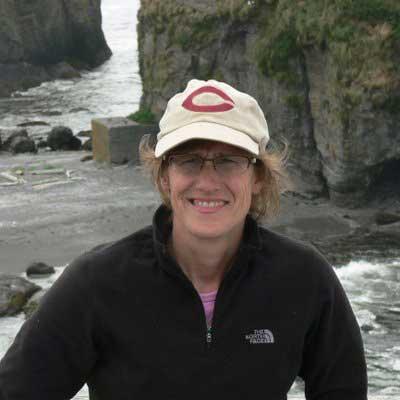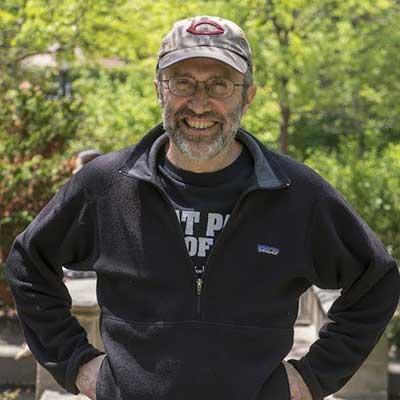Ecological succession is the process by which the mix of species and habitat in an area changes over time. Gradually, these communities replace one another until a “climax community”—like a mature forest—is reached, or until a disturbance, like a fire, occurs.
Ecological succession is a fundamental concept in ecology. The study of succession was pioneered at the University of Chicago by Henry Chandler Cowles, who was also one of the founders of ecology as a discipline, as he studied the plants of the Indiana Dunes.
Jump to a section:
- What is ecological succession?
- What are primary and secondary ecological succession?
- What is a climax community?
- What is an example of ecological succession?
- Plant succession at the Indiana Dunes
- How do we understand ecological succession today?
- Henry Chandler Cowles, ecological succession and the University of Chicago
What is ecological succession?
Ecological succession is the process by which natural communities replace (or “succeed”) one another over time. For example, when an old farm field in the midwestern U.S. is abandoned and left alone for many years, it gradually becomes a meadow, then a few bushes grow, and eventually, trees completely fill in the field, producing a forest.
Each plant community creates conditions that subsequently allow different plant communities to thrive. For example, early colonizers like grasses might add nutrients to the soil, whereas later ones like shrubs and trees might create cover and shade. Succession stops temporarily when a “climax” community forms; such communities remain in relative equilibrium until a disturbance restarts the succession process.
In this video from the National Park Service, Tim Watkins and Robert Boyd explore the Indiana Dunes, learning about its history as an important case study for the development of ecological succession theory.
Understanding how succession happens in a variety of ecosystems—and what kinds of disturbances and time spans lead to the formation of different plant and animal communities—is important for scientists who want to understand ecosystem dynamics and effectively protect or restore natural communities.
For example, many natural communities in North America have adapted to periodic disturbances from wildfires: This can help maintain prairie or savanna communities that depend on open habitat and nutrient cycling that might occur as a result of fire.
What are primary and secondary ecological succession?
There are two major types of ecological succession: primary succession and secondary succession.
Primary succession happens when a new patch of land is created or exposed for the first time. This can happen, for example, when lava cools and creates new rocks, or when a glacier retreats and exposes rocks without any soil. During primary succession, organisms must start from scratch. First, lichens might attach themselves to rocks, and a few small plants able to live without much soil might appear. These are known as “pioneer species.”
Gradually, the decomposition of those plants contributes to soil formation, and more and larger plants begin to colonize the area. Eventually, enough soil forms and enough nutrients become available such that a climax community, like a forest, is formed. If the site is disturbed after this point, secondary succession occurs.
Secondary succession happens when a climax community or intermediate community is impacted by a disturbance. This restarts the cycle of succession, but not back to the beginning—soil and nutrients are still present.
For example, after a forest fire that kills all the mature trees on a particular landscape, grasses might grow, followed by shrubs and a variety of tree species, until eventually the community that existed before the fire is present again.
What is a climax community?
A climax community is the “endpoint” of succession within the context of a particular climate and geography. In the midwestern U.S., for example, such a community might be a hardwood forest with oaks and hickories as the dominant tree species.
A climax community will persist in a given location until a disturbance occurs. However, in many ecosystems, disturbance occurs frequently enough that a matrix of community types may be consistently present on the landscape.
For example, in an area prone to wildfires like the western U.S., mature forests may exist near grassy meadows with fewer, scattered trees. Consistent disturbance and variation in factors like water and nutrient availability over the course of decades thus allows many plant and animal communities to thrive within a particular climatic and geographic niche—not just those adapted to the absence of disturbance seen in climax communities.
What is an example of ecological succession?
Ecological succession can occur in many contexts and over many time spans.
In places with volcanic eruptions, like Hawaii and Iceland, primary succession occurs on lava flows where new land has formed. In places with moving dunes, such as Canada’s Athabasca Dunes, it happens when new sand is deposited along a lakeshore. In the Andes, it occurs when glaciers retreat.
In many regions, secondary succession occurs where wildfires have destroyed conifer forests, or where former agricultural land is reverting to meadow or scrubland.
What these examples have in common is that the climax community is not the first one present on the landscape after succession begins: First, intermediate communities occupy the space, sometimes for many years, creating ideal conditions for the communities that follow.
Plant succession at the Indiana Dunes
The Indiana Dunes, 40 miles southeast of Chicago and today the site of both a state and a national park, served as the original field site for research on ecological succession in plant communities, and continue to serve as an ideal case study. (If you visit the dunes, you can walk along the Dune Succession Trail, which highlights the different stages of succession in a real-world context.)
In the 1890s, University of Chicago botanist Henry Chandler Cowles noticed that dunes which were further from Lake Michigan had different plants growing on them than dunes closer to the lake. The lakeside dunes had only beach grass, whereas those further from the shore had other plants like cottonwoods that could grow in sandy soil. Dunes still further back had pines, and finally behind them were mature oak forests that did not resemble the grassy dunes near the lake at all.
Through careful observation and comparisons, Cowles determined that the linear succession of these communities in space also represented a linear progression in time. The dunes farthest from the lake were the oldest and had been stable for longest, since sand shifts frequently in the wind without plants to hold it in place.
From this, he inferred that plant communities trended toward oak forests in northern Indiana over decades and centuries, and that each community created the soil and microclimate conditions required for its successor community to thrive: as grasses and cottonwoods stabilized dunes and added nutrients, they were replaced by later successional communities.
How do we understand ecological succession today?
Ecological succession is a foundational concept in ecology, which as a field examines the structure and dynamics of biological communities. Today, the concept of ecological succession continues to be studied from new angles as humans modify the global environment more than ever before. As new nuances have been added to the original theory, insights have emerged that are valuable to humans interested in managing natural resources.
For example, recent studies show that even in “climax” communities, changes in what resources are available may shift the balance of the species composition over time, even without a formal disturbance. Other work has examined the impact of biodiversity loss, invasive species, climate change and other anthropogenic factors in altering the way ecosystems respond to change.
As native species go extinct or become rare, new species enter ecosystems, and climate baselines shift, the communities that once dominated an ecosystem may be less likely to eventually return after a disturbance. However, studying succession can also provide valuable insights for ecologists and wildlife managers interested in restoring those natural systems: through careful management such as controlled burning or invasive species control, people can help ecological communities stay strong.
Henry Chandler Cowles, ecological succession and the University of Chicago
The University of Chicago played a key role in pioneering the scientific study of ecological succession and ecology as a discipline more broadly. Following his pivotal dissertation work in the Indiana Dunes as a UChicago doctoral student, Henry Chandler Cowles went on to become a professor, remaining at UChicago for more than three decades, until the early 1930s. He taught generations of students about the ecology of North America through course field trips across the continent from Maine to Alaska, California and Texas.
The trips—and Cowles’ fieldwork—are documented in the University’s special collection of American Environmental Photographs, which show Cowles, students, and American landscapes from a century ago in great variety and detail. Cowles’ papers are also housed in the Hanna Holborn Gray Special Collections Research Center, and can be found here. Additionally, Cowles’ student Victor Ernest Shelford became an influential ecologist in his own right and a leader in the founding of the Nature Conservancy, a major conservation nonprofit.
In the early 20th century, the University of Chicago was also home to other noted ecologists and marine biologists, including George Damon Fuller and Warder Clyde Allee, an early expert on social relationships in animals and an important figure in the development of ecology.
Today, the University of Chicago remains a leader in research on ecology and evolutionary biology. The University’s Warren Woods Ecological Field Station in Berrien County, Michigan offers students, faculty and staff the opportunity to study and observe ecosystem dynamics in a landscape that includes both remnant (undisturbed) forest, restored prairie and old fields.
Last reviewed November 2025.

